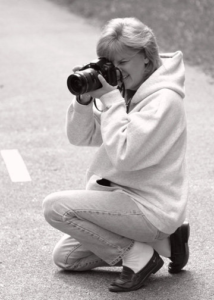 This post contains affiliate links.
This post contains affiliate links.
So you want to learn photography? Let me just say that once you get started learning this valuable skill, it will get under your skin and become a part of you forever. No other hobby or career takes you to exciting, beautiful places, tests your technical skills, and challenges your artistic side at the same time quite like photography does. Sure, anybody can grab a camera, put it in “P” mode, and press the button. However, I’m talking about when you’re really ready to learn the ins and outs of your camera, and how all the technical aspects work together to make interesting, well exposed and beautiful photographs. These are my recommendations of the things you need to begin the process of learning the basics of photography:
• The book Understanding Exposure This book has been around for generations, and has consistently garnered 5 Star reviews on Amazon. is It is THE book for learning how your camera works and how shutter speed, f-stop and ISO play together. I cannot recommend a better book – seriously. Even if you are just a hobbyist, this book will help you to understand how to work your camera to get optimal results and beautifully exposed photographs. It’s the best 20 bucks you’ll spend.
• A high-quality carbon fiber tripod – It’s definitely a little awkward at first trying to learn how to use a tripod, but it’s absolutely essential for getting sharp shots, especially in low light or long shutter speed situations, such as sunsets or waterfalls. I also use my tripod all the time when I am shooting for stock – it’s imperative that your stock photos be sharp as a tack or they will be turned down by the stock sites.
• A ball head with quick release – A high-quality swivel ball head is needed so you can maneuver your camera quickly on the tripod, which is important when shooting things that move like wildlife, people, or sports.
• A circular polarizing filter – A good-quality circular polarizing filter that screws on and adjusts by rotating the filter is a must to control reflections on water, glass, or other shiny surfaces. When used properly, the filter will reduce haze, increase contrast, get rid of reflections, and saturate colors in your photographs. Be aware though – the filter will affect the exposure of your photographs (all the more reason to have a quality tripod for the reduced shutter speeds!) Make sure you get the correct filter size to fit your lens!
• Extra Memory Cards – As far as I’m concerned you can never have too many memory cards! It’s personal preference, but I don’t like to shoot on large sized memory cards. That way if the card corrupts, you are losing less images. And it forces me to think about each shot I’m taking because I don’t have thousands of shots left on my card. The largest card I would use is a 16 GB card.
This post contains affiliate links, which means if you purchase a product through one of my links, I make a small commission, which allows me to continue travelling and photographing this beautiful world! Thank you for supporting this small business! 🙂